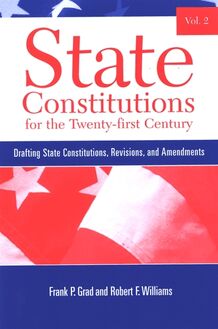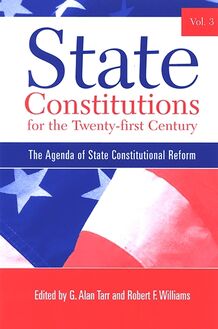State Constitutions for the Twenty-first Century, Volume 1 , livre ebook
226
pages
English
Ebooks
2006
Obtenez un accès à la bibliothèque pour le consulter en ligne En savoir plus
Découvre YouScribe en t'inscrivant gratuitement
Découvre YouScribe en t'inscrivant gratuitement
226
pages
English
Ebooks
2006
Obtenez un accès à la bibliothèque pour le consulter en ligne En savoir plus
Publié par
Date de parution
01 juin 2006
Nombre de lectures
1
EAN13
9780791482452
Langue
English
Poids de l'ouvrage
1 Mo
Introduction
G. Alan Tarr
PART I: Constitutional Commissions and Constitutional Reform
1. Constitutional Revision in Florida: Planning, Politics, Policy, and Publicity
Rebecca Mae Salokar
2. Constitutional Revision in California: The Triumph of Amendment over Revision
Bruce E. Cain
3. Adopting a New Constitution: Lessons from Virginia
A. E. Dick Howard
PART II: Putting Constitutional Reform on the Agenda
4. Constitutional Reform in Alabama: Long Time in Coming
H. Bailey Thomson
5. The Mandatory Constitutional Convention Question Referendum: The New York Experience in National Context
Gerald Benjamin
6. Direct Democracy and Constitutional Reform: Campaign Finance Initiatives in Colorado
Anne G. Campbell
Appendix: Mechanisms for State Constitutional Change
Contributors
Index
Publié par
Date de parution
01 juin 2006
Nombre de lectures
1
EAN13
9780791482452
Langue
English
Poids de l'ouvrage
1 Mo


